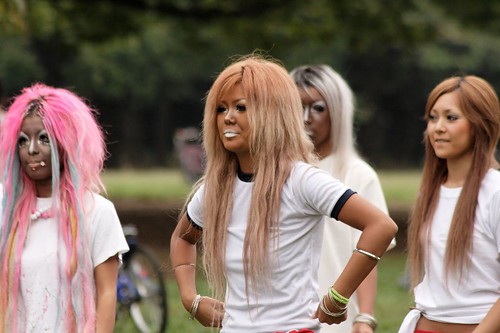
The fundamental difference between Eastern and Western cultures may most simply be expressed in the basic design of each culture's eating utensils. It is interesting to consider the very different methods the two cultures have developed to perform the same function. Arguably, eating is among our most primary behaviors and utensils used in eating are our most rudimentary tools.
The Chinese call their eating utensils "kuàizi." The Japanese call them "hashi," the Vietnamese call them "đũa" and the Koreans call them "jeotgarak." In English, they are known as "chopsticks". Chopsticks are a matched pair of fine, even-lengthed, tapered sticks, and they are the traditional eating utensils of China, Japan, Vietnam and Korea. Chopsticks originated in China and have been in use for over 4,000 years.
Chopsticks reflect the Asian ideal of harmony, which is a core value in Eastern philosophy. According to the Penguin Dictionary of Philosophy, philosophy is "the most fundamental and general concepts and principles involved in thought, action and reality."

In Asian cultures, food is cut into bite-size pieces before being cooked and the knife stays in the kitchen. This is a completely different approach to eating as compared to the Western method of serving large pieces that are cut with individual knives at the dining table, then stabbed for transportation to the mouth of the consumer.
On About.com, Rhonda Parkinson, Chinese cooking expert and author of Everything Stir-fry Cookbook (Adams Media, 2007) writes, "Confucius equated knives with acts of aggression, which went against his non-violent teachings. Some experts credit his influence with the widespread adoption of chopsticks throughout China; scholarship had triumphed over the warrior lifestyle."
Rhonda Parkinson goes on to state, "In the United States, it wasn't until the eighteenth century that people felt the need for more than a knife and spoon." In fact, according to Henry Petroski in The Evolution of Useful things (1992), most common Europeans primarily used their hands for most of the second millennia, calling for a spoon only when necessary. Among the upper class, where manners were a consideration, the aristocracy used a knife in each hand, which served to cut food, stab it and carry it to the mouth.
At the turn of the first millennia, the fork was used by the elite in the Middle East and Byzantium. It made repeated forays into Europe, where it was repeatedly rejected by religious figures as demonic, due to its similarity to the devil's pitchfork. It was also viewed as "excessively delicate." This perceived delicacy was regarded as an ungodly affectation and arrogant in its extravagance.
It was not until the marriage of Catherine de Medici and King Henry II of France in 1533 that the fork became common in continental Europe. It was another century before King Charles I declared that, "it is decent to use a fork," marking the beginning of modern table manners in Great Britain. (Blogspot, Lite Strabo, Lite Stories from History)
Thus, the history of Western table utensils is significantly a matter of social hierarchy, where the practices of the elite are desperately and progressively followed by the lower classes. In the West, use of utensils became rigorously involved, with a finely described pattern of table presentation and etiquette regarding use of each particular utensil. Again, access to and knowledge of "proper" use of table utensils was far more a mechanism for establishing social class than for utility in eating a meal.
So, while the use of simple chopsticks may seem humble next to the onslaught of eating tools one may find at a well-appointed Western table, the grace of the chopstick is truly a reflection of the sophisticated Eastern philosophy of harmony. In contrast, a Western table seems predatory, both in the graphic use of cutting and stabbing and in it's complex association with social class.
Citation:
“Definition of philosophy.” Wikipedia, the Free Encyclopedia. (29 August 2007). 9 Oct. 2007.
Parkinson, Rhonda. “Chopsticks.” About.com, (2007). 9 Oct. 2007.
Petroski, Henry. The Evolution of Useful things. New York: Alfred A. Knopf (1992).
Strabo, Lite. “Lite Strabo, Lite Stories from History”. History of the Fork. (11 Feb. 2007). 9 Oct. 2007.
Images:
http://www.flickr.com/photos/10695236@N04/3051062691/








